Everything You Need to Know About Medicine Balls
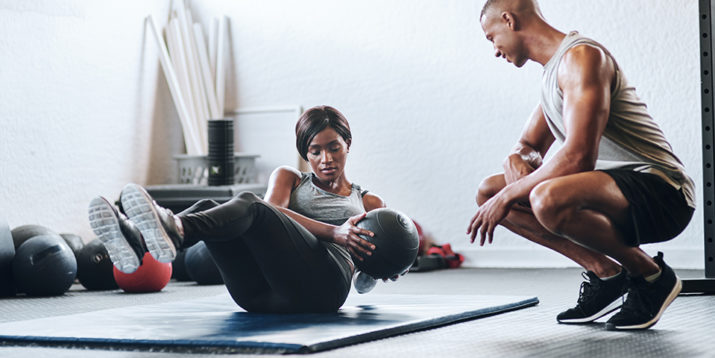
If you’re new to working out or have historically stuck to cardio or using dumbbells, you may have wondered, “What is a medicine ball, exactly?”
Obviously, dumbbells are for lifting. Bands are for pulling, and boxes are for jumping on, but what does a medicine ball do?
Does it, as its name suggests, offer some therapeutic benefit? How does it differ from any other spherical fitness equipment?
What is a medicine ball’s place in your own exercise routine?
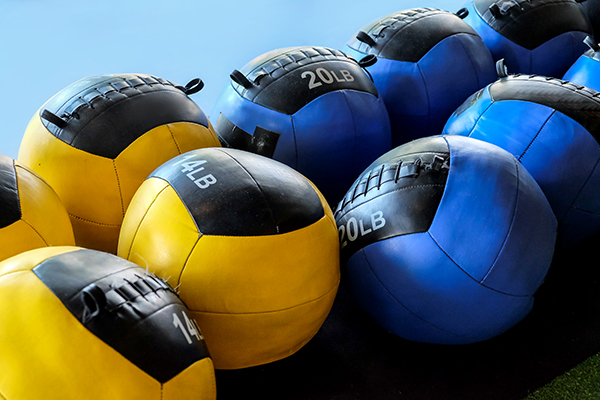
What Is A Medicine Ball?
Typically made of leather, vinyl, plastic, or rubber, medicine balls are soft-shell, weighted balls that can be thrown, tossed, carried, or used to add resistance to a movement.
They’re often filled with sand, gel, or other synthetic materials.
Medicine balls vary in size, but the most commonly used medicine balls are about shoulder-width in diameter.
Some medicine balls are designed to bounce back when thrown against a hard surface, while others offer little to no rebound.
What Are the Benefits of a Medicine Ball?
1. Functional Movement Training
While traditional weights are excellent fitness tools, working out with a medicine ball opens up various exercise options, like throwing and tossing and moving in every plane of motion.
This is particularly relevant to athletes, ranging from the pro basketball player improving his three-pointer to the recreational golfer who simply wants to safeguard her shoulders against injury.
“Medicine balls are great for building power and speed in sport-specific movement patterns,” says Matt Guffey, CSCS, owner of Victory High Performance in San Jose, California, who programs medicine ball workouts for every one of his clients.
“They’re great for teaching the core to transfer energy effectively from the ground up,” he adds.
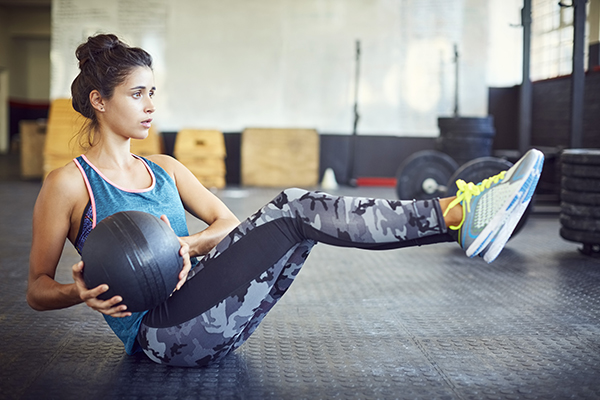
2. Engage More Muscles
The actual shape and construction of the medicine ball can also alter — and, in some cases, amplify — the impact of a workout, explains Alex Tan, CPT, founder of Schimiggy Reviews.
“Dumbbells and kettlebells require you to engage your arms, but a medicine ball requires you to engage much more than that because it doesn’t have a grip like a dumbbell,” says Tan.
“Grips force you to engage your entire arm, but we often forget to engage other muscles as well. This includes the entirety of your back muscles and core, which medicine balls definitely target,” she explains.
3. Simplify Your Workout
And for those who are just beginning their fitness journey, a medicine ball may seem less intimidating than other pieces of equipment, thereby offering an easy entry point to resistance training.
After all, not everyone knows how to properly load a barbell, but most people have picked up a ball at some point in their lives.
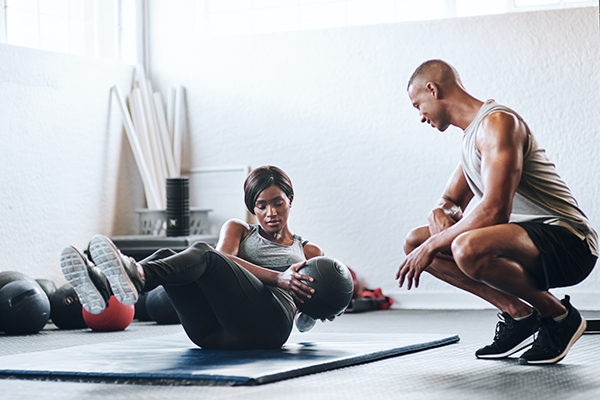
How to Use a Medicine Ball
As with any new fitness tool or exercise, start light and go slow.
Your first medicine ball workout should be about getting comfortable with using the medicine ball, so don’t pick up the heaviest medicine ball on the rack.
Also, it’s perfectly fine to incorporate just one or two movements into your existing routine.
“I wouldn’t recommend using medicine balls as a replacement for, but rather, as a supplement to other strength training modalities,” says Guffey.
Here are a few ideas to get you started…
1. Medicine Ball Carries
One of the easiest ways to use a medicine ball is to carry it as you walk or run (if your training already includes weighted runs.)
No matter how you hold the ball (against your chest, over your head, under your arm, etc.), your core will work overtime as you put one foot in front of the other.
2. Medicine Ball Squats
Switch up your circuit standards, like squats, lunges, and deadlifts, by adding a medicine ball to the mix.
You can hold a medicine ball the same way you would hold a single dumbbell with both hands.
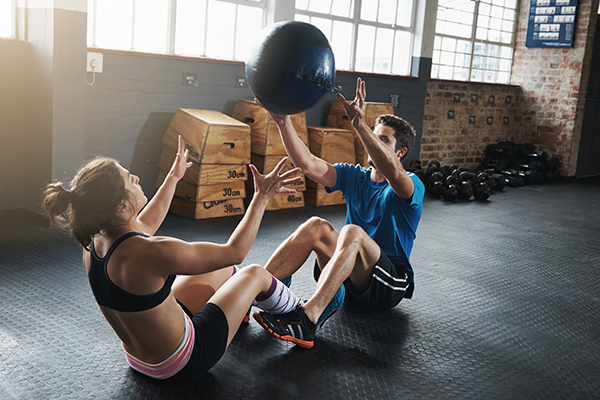
3. Medicine Ball Throws
Medicine balls were meant for throwing! Try engaging a workout partner in a few rounds of chest passes.
No partner? You can toss a medicine ball over your shoulder, up in the air, or at a wall.
4. Medicine Ball Slams
First, make sure your medicine ball doesn’t bounce and that it’s sturdy enough to withstand some force. Then, get slamming!
From an overhead position, slam it against the floor, squat to pick it up, stand up, and slam again.
Repeat for an intense, full-body workout.
